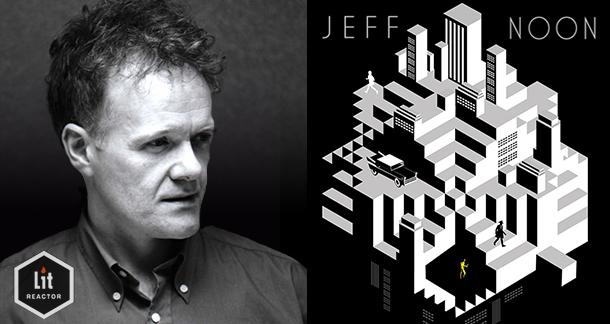Adventures in the Noir Trade: Mixing Genres

I am very much a genre man. Rather than the niceties of the well brought-up “literary” novel, I prefer sensational tales told in broad strokes with lots of twists and turns, startling imagery, sharply defined characters, and some event or revelation that makes me sit up and say out loud, “What the hell? That’s amazing!” Quite simply, I want to be struck with awe. And from an early age, science fiction novels fed that essential desire. But alongside my love of space ships, aliens and robots, I’ve always been into crime novels, ever since I started reading Enid Blyton’s Famous Five books as a child. Secret hideaways, dastardly schemes, lots of clues, red herrings, cyphers and hidden messages, nasty criminal types getting their comeuppance: what more could you want at the age of seven or eight? I graduated to Conan Doyle, Agatha Christie, Dorothy L Sayers and other Golden Age writers when I was a bit older: to this day I consider Christie to be the best plotter of the murder mystery. And I remember the racy thrillers my dad brought home, with their lurid covers and titles. Always worth a quick peek for the good bits!
As a young man, I turned to darker fare, usually drawn from the American pulp tradition: Chandler, Hammet, James M Cain and the like. And then the later exponents of the genre, especially the small-town cruelties of Jim Thomson (the “Dime Store Dostoevsky”), and the brilliant private eye novels of Lawrence Block and Ross Macdonald. If I was forced to choose (at gunpoint, of course!) I would say that Ross Macdonald was my favourite crime writer. The series of novels he wrote featuring gumshoe Lew Archer tell warped tales of family love gone dreadfully wrong, all rendered in the best possible noir style. I can reread his books many times and still be thrilled at his startling (and often very beautiful) turns of phrase. Black-hearted, tough-guy poetry at its best.
Indeed, if I had to (hard)boil my love of murder mysteries down to just one phrase, it would be “noir poetry”. I want to witness the darkness of the soul, painted in words that send shivers through my body. Perhaps the modern master of this approach is James Lee Burke, with his Dave Robicheaux series set in New Orleans. The lyricism of his style overflows the page, as he takes the reader on a journey into the very worst kind of human behaviour: beauty and evil slugging it out. Perfect. But my go-to contemporary crime writer is Jo Nesbo. I’ve read all the Detective Harry Hobbes novels twice, sometimes three times. His plotting fascinates me: I can never work out if Nesbo’s planned his complicated stories in great detail beforehand, or whether he’s just writing precariously, hoping to bring it all together on the final page. Which he invariably does. This blend of complexity and freeform lushness really appeals to me, both as a reader and a writer.
So in the last few years I’ve been looking for ways to express myself in the genre, both in pure crime novel terms, and in combination with science fiction. My straight crime novel is an ongoing writing adventure, which I hope to bring to completion one day soon; but the weird science fiction murder mystery of A Man of Shadows is now ready for unveiling. Early on, I realised that my fictional city’s atmosphere didn’t really chime with the digital age, so the story is set it in a version of the past, the late 1950s. I wanted smoke, steam trains, proper telephones with a dial, ceiling fans, neon signs, shadows, bad guys, fedoras, and a hero who drinks whiskey. A lot of whiskey. The only thing missing is a femme fatale. I think she’ll arrive in the second book in the Nyquist series. The final title of the novel was chosen not just because it sums up the ambiguity at the heart of my private eye, but also because it helps to place the book in the noir tradition, while hinting at ghosts and other nebulous beings.
One of the very first science fiction novels I ever read was Isaac Asimov’s The Naked Sun, which very effectively combined his theme of artificial (positronic) intelligence with a murder mystery. I was probably thirteen or fourteen at the time, and I can remember being very impressed with the use of twisted robotic logic as a means of uncovering the real motives behind a crime. Asimov expertly brought together tropes from both genres, and fused them into a hybrid creation (in itself a science fictional act). He wasn’t the first author to do so, but Asimov certainly brought the mixed form to a new peak of expression. He was well aware of the dangers, however. In the introduction to one edition of The Caves of Steel, he talks about his editor John W. Campbell’s advice: “Campbell had often said that a science fiction mystery story was a contradiction in terms; that advances in technology could be used to get detectives out of their difficulties unfairly, and that the readers would therefore be cheated. I sat down to write a story that would be a classic mystery and that would not cheat the reader — and yet would be a true science-fiction story.”
Walking the borderline between two or more genres is always an interesting adventure: you never know what strange amalgamated creatures you’ll discover there. But I hope the science fictional and criminal elements of A Man of Shadows marry well, and that the language – at times drawing on the old style, at other times bang up to date – is rich enough to portray the troubled private eye, the bizarre city he lives in, and the desperate young woman he’s trying to find before someone, or something, kills her.









To leave a commentLogin with Facebook